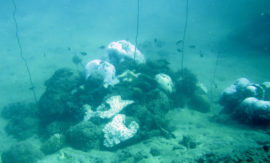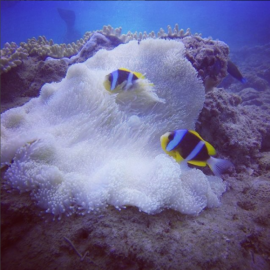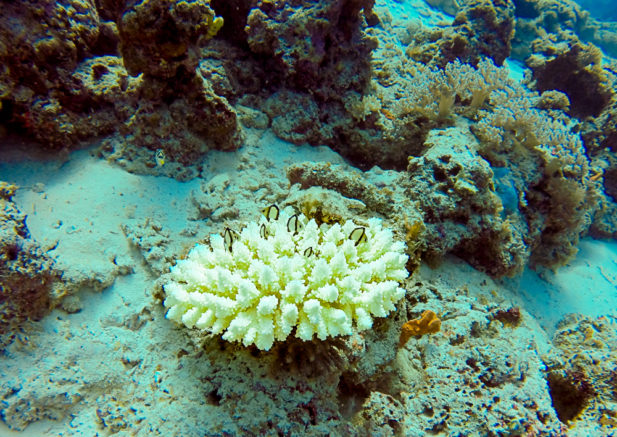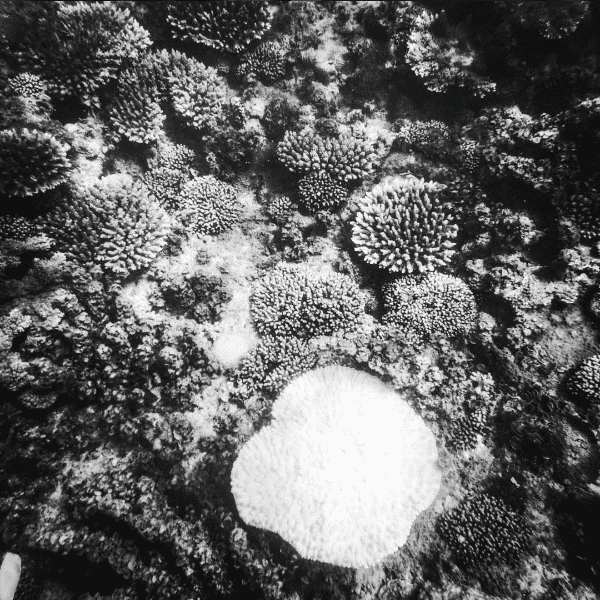At the beginning of May I travelled to Madagascar, along with 11 other volunteers, for a six week adventure with Blue Ventures in the remote village of Andavadoaka.
We arrived in the middle of a mass bleaching event where shockingly colourless corals were on the brink of survival. I was inspired by this distressing sight to gain a better understanding of the bleaching process, so I began investigating the potential contributing factors behind the bleaching event in Madagascar…
An aerial survey recently revealed that almost 93% of the Great Barrier Reef in Australia has suffered from coral bleaching!
I learnt that the coral bleaching I witnessed in Madagascar is part of a serious global mass bleaching event. Coral reefs around the world are undergoing staggering amounts of bleaching, leaving many ecosystems at risk of collapse. This global crisis is linked to the recent El Niño event – a natural weather phenomenon that occurs roughly every two to seven years.
The story of El Niño begins in the Pacific Ocean. The El Niño Southern Oscillation (ENSO) has two phases – the cool phase, La Niña, and the warm phase, El Niño. During the cool phase, strong trade winds blowing to the Eastern Pacific cause an easterly ocean current that pushes warm surface waters to Australia and Indonesia. There the warm air rises, causing storms and providing much needed rain. On the other side of the ocean the coasts of North and South America experience colder waters circulated from the deep ocean and dry, arid conditions over land.
The name “El Niño”, meaning “The boy” in Spanish, comes from the fact that the water near South America is often at its warmest near Christmas.
Every so often these trade winds weaken, causing warm air to rise over the mid Pacific instead – the warm phase. With these changing conditions come celebrations on the coasts of South America, as the warmer waters bring more nutrients, increasing the productivity of their fisheries, and more rain to moisten the parched soil and improve their agriculture.
On the other side of the Pacific Ocean however, it is a different story. For Australians, Indonesians and other West Pacific nations, El Niño causes severe draughts, blistering heat and extremely high sea surface temperatures.
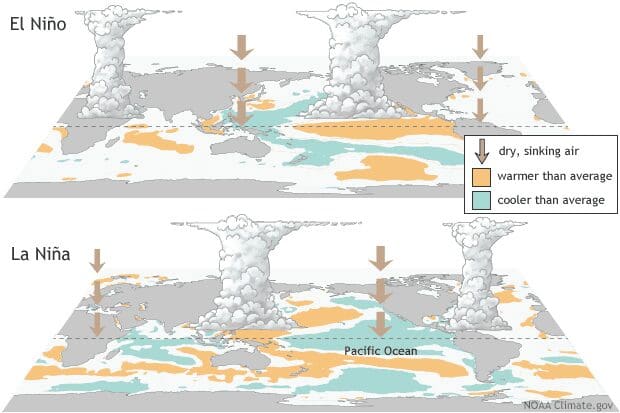
Figure from the National Oceanic and Atmospheric Administration
ENSO can cause higher than normal sea surface temperatures in the Indian Ocean too, as warm waters from the Pacific overspill into the Indian Ocean through the Indonesian Strait. This is also exacerbated when ENSO coincides with the Indian Dipole – a large temperature difference across eastern and western ends of the Indian Ocean basin resulting in abnormally high sea surface temperatures around Madagascar and the east coast of Africa.
These warm waters are the crux of the global bleaching event. High sea surface temperatures can be disastrous for coral reefs as they are a key stressor for the photosynthetic algae that provide corals with vital nutrients. When the water gets too hot, these algae are expelled from the coral, leaving it to suffer severe malnutrition. This can lead to death if the high temperatures continue, as explained in Blue Ventures’ recent blog Corals in crisis.
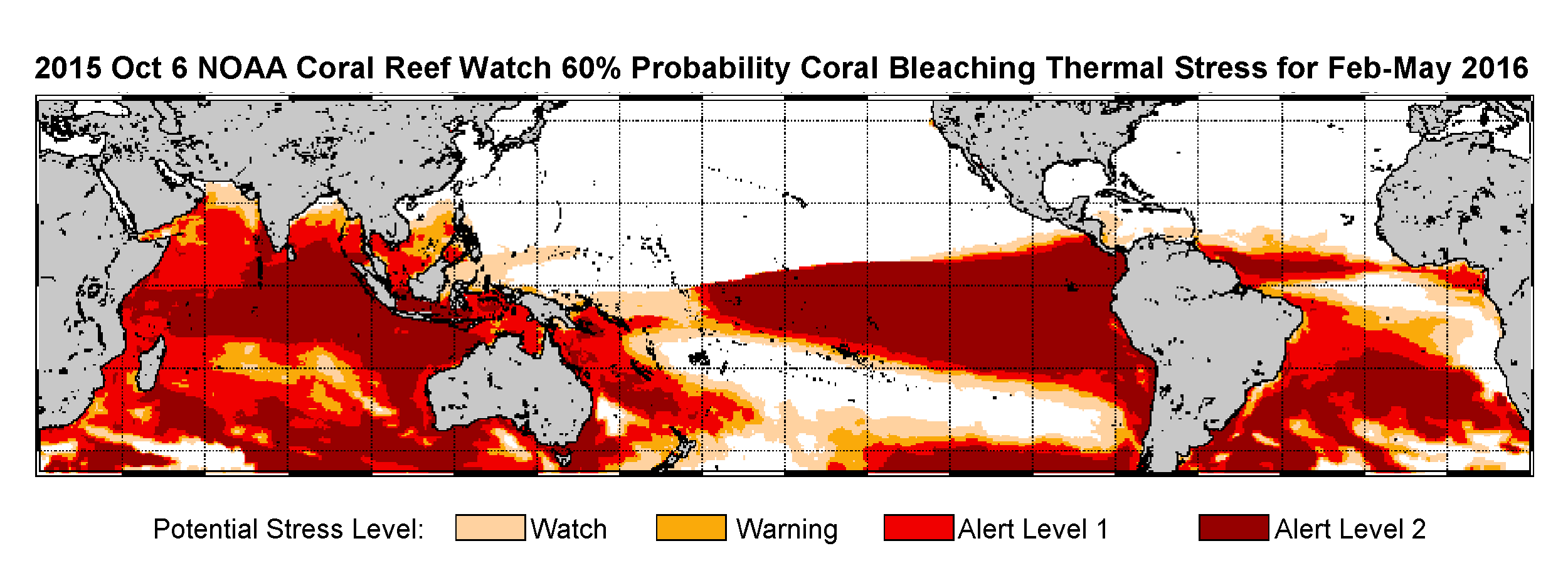
Figure from the National Oceanic and Atmospheric Administration
Although El Niño is a naturally occurring event, it is becoming increasingly frequent, with recent events occurring in 2003, 2007, 2010 and 2015. Climate change is already exacerbating the effects of many extreme weather events, and the impacts of El Niño on recurrent coral bleaching episodes is being closely monitored in the hope that the future health of the world’s reefs can be protected through improved management.
In Andavadoaka this monitoring starts with volunteers like myself helping to collect the data, which is then shared with regional and global research networks. This emphasises the importance of volunteers and the role they can play in helping scientists document events, and in supporting conservation initiatives aiming to mitigate the effects of future events.
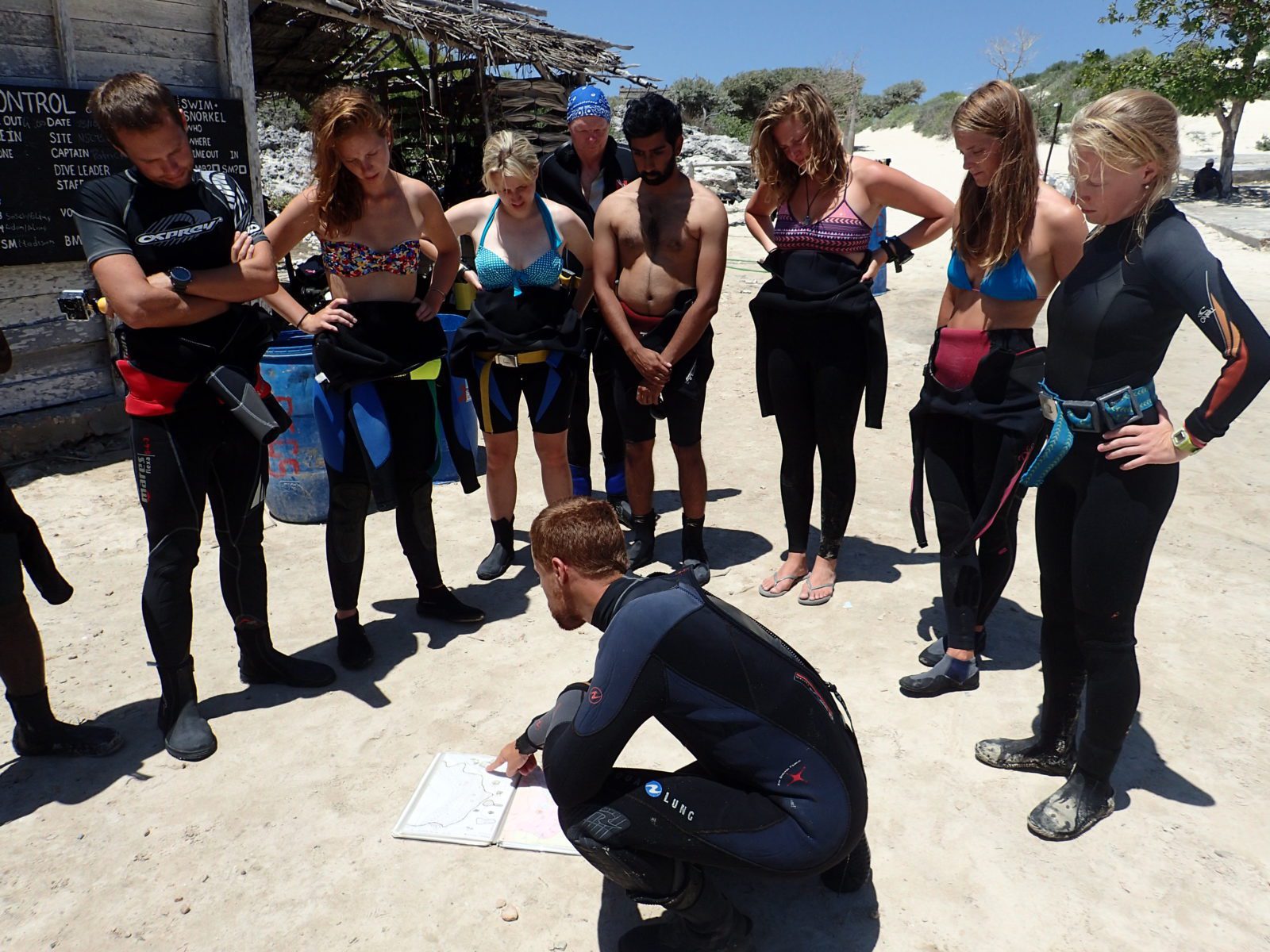
Blue Ventures volunteers are instructed in data collection and coral monitoring techniques.
The bleaching of the beautiful reefs here in South West Madagascar is still occurring, but luckily, as the cold season approaches, there are some promising signs of recovery. This indicates that many of the corals may be able to survive and the reefs may be able to regain overall pre-bleaching health.
Learn more about bleaching in the Western Indian Ocean
Find out how to volunteer with Blue Ventures


